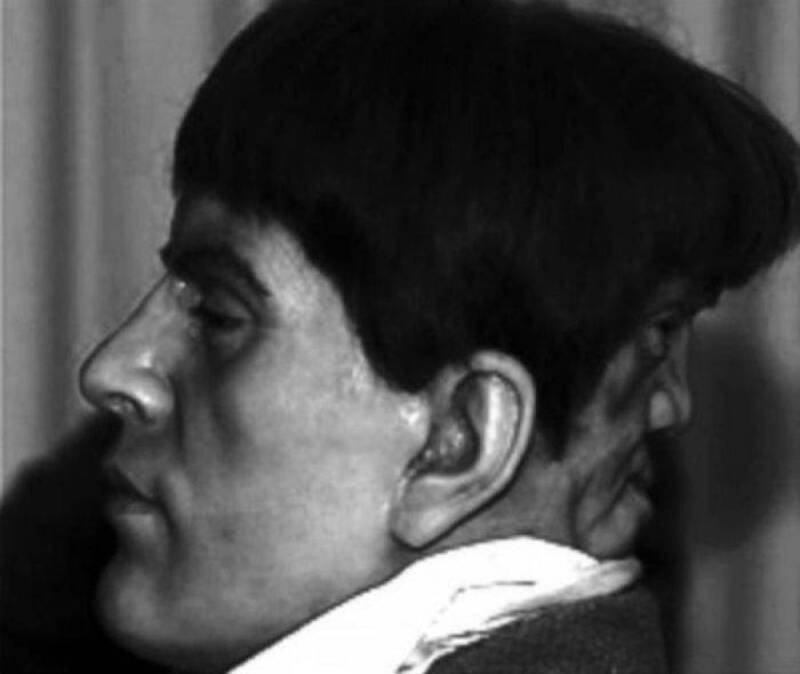The Tale Of Edward Mordrake And The Deformity That Morphed Into A Myth

TwitterA wax construction of what Edward Mordrake might have looked like.
Edward Mordrake was said to be a man doomed with a second face on the back of his head. His disturbing situation was popularized by George Gould and Walter Pyle in an 1896 science textbook, but as it turns out, Mordrake’s story is a complete fabrication-turned-urban legend.
A story published on Dec. 8, 1895, in the Boston Sunday Post, titled “The Wonders of Modern Society,” described how a man named Edward Mordrake had a second, female face as “lovely as a dream, hideous as a devil” on the back of his head. The face would whisper “such things as they only speak of in hell” to poor Mordrake at night and sneered at him whenever he cried.
Driven insane by the face, Mordrake was said to have taken his own life at 23 years of age. His suicide note begged for the face to be destroyed, “lest it continues its dreadful whispering in my grave.”
Then, Gould and Pyle popularized the tragic tale in their Anomalies and Curiosities of Medicine, which was published the following year. Mordrake’s story became fodder for countless publications and begat callous writing about physical deformities and weird wonders of the world.
While craniofacial duplication is a real biological phenomenon, those born with an extra face rarely live long and none are capable of independent speech, as there’s only one brain. It was only in 2015 that the Museum of Hoaxes uncovered that the original Boston Sunday Post article about Mordrake was actually written by a science-fiction author and was otherwise utterly baseless.
Though the writer’s predilection for genre doesn’t disprove the claims in his article, the sources he employed, which weren’t later verified diligently enough by Gould and Pyle, certainly seemed to. The Post article cited the “Royal Scientific Society” as one of its most substantial sources, but this organization didn’t exist.
Furthermore, the writer’s additional references to the Fish Woman of Lincoln (a mermaid-type creature) and the Norfolk Spider (a human head with six legs) were entirely fabricated. No literary or scientific database yielded anything remotely similar to these creatures.
Nonetheless, the urban myth of the two-faced Edward Mordrake has endured. It was most recently chronicled in an episode of the television show American Horror Story to chilling effect. Perhaps what is most ghastly about this urban legend is how quickly an unfounded narrative can take hold and reverberate in popular consciousness for centuries.





